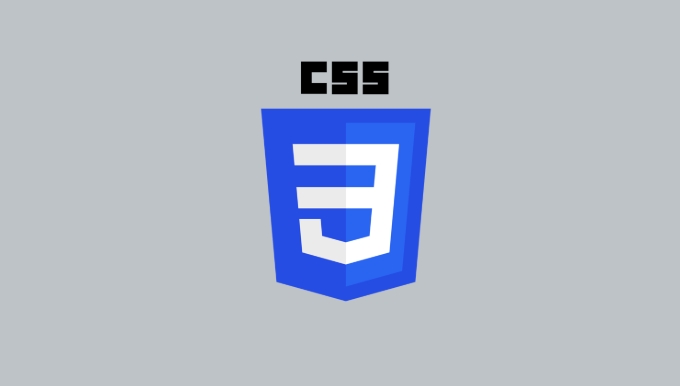CSS's calc() function allows mathematical operations to be performed directly in style sheets. Its basic syntax includes four operations: addition, subtraction, multiplication and division, and requires spaces to be added when using the sum- operator. The main uses include: 1. Adjust the width without changing the box model (such as deducting the inner margin); 2. Dynamically position elements (such as centering based on percentages and fine-tuning the position); 3. Mix different units for calculations (such as combining viewport units and pixels). Additionally, calc() supports nested use, but overcomplexity should be avoided to maintain readability. Browser compatibility is good and there is no need to add prefixes, but potential issues need to be paid attention to when dealing with older browsers (such as IE11). It is recommended to add comments to complex expressions and perform multi-browser testing when using them.

Using calc() in CSS is a handy way to do math right inside your stylesheets. It's especially useful when you need to mix different units or calculate widths, heights, margins, and more on the fly. Let me break down how it works and when you might want to use it.

Basic Syntax of calc()
The calc() function lets you perform basic math operations — addition, subtraction, multiplication, and division — directly in your CSS values. The syntax looks like this:

width: calc(100% - 20px);
One thing to remember: always put spaces around the and - operators. Otherwise, it won't work. So this is correct:
calc(100% - 20px)
But this won't work:

calc(100%-20px)
You can use any valid CSS value inside calc() — pixels, percentages, ems, rems, viewport units, etc. That flexibility makes it super useful for responsive layouts.
Common Use Cases for calc()
There are a few situations where calc() really shines:
Adjusting width with padding or borders
If you want an element to be 100% wide but also have padding, usingbox-sizing: border-boxusually handles that. But if you can't change the box model,calc()is a good alternative:.box { width: calc(100% - 20px); /* subtract left and right padding */ padding: 0 10px; }Positioning elements dynamically
You might want to center something but adjust based on another value. For example:.tooltip { left: calc(50% - 100px); }Mixing units
This is one of the most powerful uses. Say you want font size to scale with viewport width but add a little extra:font-size: calc(1vw 10px);
These examples show how calc() helps avoid JavaScript or extra wrapper elements just to handle layout math.
Nesting calc() Functions
Yes, you can even nest calc() functions inside each other. It's not something you'll use every day, but it can come in handy when dealing with complex calculations.
Here's a contributed example:
width: calc( (100% / 3) - calc(30px 1em) );
In practice, nesting gets hard to read fast, so keep it simple unless you really need it. Also, modern preprocessors like Sass or Less might make nested math easier to manage before it hits the browser.
Browser Support and Tips
Browser support for calc() is solid these days — all major browsers support it without issues. No need to worry about prefixes anymore.
A couple quick tips:
- Don't forget the spaces around
-. - Use comments inside complex
calc()expressions if needed, though CSS doesn't allow inline comments inside them. - Test in multiple browsers if targeting older versions (like IE11), where some quirks exist.
If you're building responsive sites or doing anything dynamic with spacing or sizing, calc() is a great tool to keep in your CSS toolkit.
That's the basics of using calc() in CSS. Not too complicated once you get used to the syntax, but incredibly useful in real-world layouts.
The above is the detailed content of How to use the CSS calc() function tutorial. For more information, please follow other related articles on the PHP Chinese website!

Hot AI Tools

Undress AI Tool
Undress images for free

Undresser.AI Undress
AI-powered app for creating realistic nude photos

AI Clothes Remover
Online AI tool for removing clothes from photos.

Clothoff.io
AI clothes remover

Video Face Swap
Swap faces in any video effortlessly with our completely free AI face swap tool!

Hot Article

Hot Tools

Notepad++7.3.1
Easy-to-use and free code editor

SublimeText3 Chinese version
Chinese version, very easy to use

Zend Studio 13.0.1
Powerful PHP integrated development environment

Dreamweaver CS6
Visual web development tools

SublimeText3 Mac version
God-level code editing software (SublimeText3)

Hot Topics
 What is 'render-blocking CSS'?
Jun 24, 2025 am 12:42 AM
What is 'render-blocking CSS'?
Jun 24, 2025 am 12:42 AM
CSS blocks page rendering because browsers view inline and external CSS as key resources by default, especially with imported stylesheets, header large amounts of inline CSS, and unoptimized media query styles. 1. Extract critical CSS and embed it into HTML; 2. Delay loading non-critical CSS through JavaScript; 3. Use media attributes to optimize loading such as print styles; 4. Compress and merge CSS to reduce requests. It is recommended to use tools to extract key CSS, combine rel="preload" asynchronous loading, and use media delayed loading reasonably to avoid excessive splitting and complex script control.
 External vs. Internal CSS: What's the Best Approach?
Jun 20, 2025 am 12:45 AM
External vs. Internal CSS: What's the Best Approach?
Jun 20, 2025 am 12:45 AM
ThebestapproachforCSSdependsontheproject'sspecificneeds.Forlargerprojects,externalCSSisbetterduetomaintainabilityandreusability;forsmallerprojectsorsingle-pageapplications,internalCSSmightbemoresuitable.It'scrucialtobalanceprojectsize,performanceneed
 Does my CSS must be on lower case?
Jun 19, 2025 am 12:29 AM
Does my CSS must be on lower case?
Jun 19, 2025 am 12:29 AM
No,CSSdoesnothavetobeinlowercase.However,usinglowercaseisrecommendedfor:1)Consistencyandreadability,2)Avoidingerrorsinrelatedtechnologies,3)Potentialperformancebenefits,and4)Improvedcollaborationwithinteams.
 CSS Case Sensitivity: Understanding What Matters
Jun 20, 2025 am 12:09 AM
CSS Case Sensitivity: Understanding What Matters
Jun 20, 2025 am 12:09 AM
CSSismostlycase-insensitive,butURLsandfontfamilynamesarecase-sensitive.1)Propertiesandvalueslikecolor:red;arenotcase-sensitive.2)URLsmustmatchtheserver'scase,e.g.,/images/Logo.png.3)Fontfamilynameslike'OpenSans'mustbeexact.
 What is Autoprefixer and how does it work?
Jul 02, 2025 am 01:15 AM
What is Autoprefixer and how does it work?
Jul 02, 2025 am 01:15 AM
Autoprefixer is a tool that automatically adds vendor prefixes to CSS attributes based on the target browser scope. 1. It solves the problem of manually maintaining prefixes with errors; 2. Work through the PostCSS plug-in form, parse CSS, analyze attributes that need to be prefixed, and generate code according to configuration; 3. The usage steps include installing plug-ins, setting browserslist, and enabling them in the build process; 4. Notes include not manually adding prefixes, keeping configuration updates, prefixes not all attributes, and it is recommended to use them with the preprocessor.
 What are CSS counters?
Jun 19, 2025 am 12:34 AM
What are CSS counters?
Jun 19, 2025 am 12:34 AM
CSScounterscanautomaticallynumbersectionsandlists.1)Usecounter-resettoinitialize,counter-incrementtoincrease,andcounter()orcounters()todisplayvalues.2)CombinewithJavaScriptfordynamiccontenttoensureaccurateupdates.
 CSS: When Does Case Matter (and When Doesn't)?
Jun 19, 2025 am 12:27 AM
CSS: When Does Case Matter (and When Doesn't)?
Jun 19, 2025 am 12:27 AM
In CSS, selector and attribute names are case-sensitive, while values, named colors, URLs, and custom attributes are case-sensitive. 1. The selector and attribute names are case-insensitive, such as background-color and background-Color are the same. 2. The hexadecimal color in the value is case-sensitive, but the named color is case-sensitive, such as red and Red is invalid. 3. URLs are case sensitive and may cause file loading problems. 4. Custom properties (variables) are case sensitive, and you need to pay attention to the consistency of case when using them.
 What is the conic-gradient() function?
Jul 01, 2025 am 01:16 AM
What is the conic-gradient() function?
Jul 01, 2025 am 01:16 AM
Theconic-gradient()functioninCSScreatescirculargradientsthatrotatecolorstopsaroundacentralpoint.1.Itisidealforpiecharts,progressindicators,colorwheels,anddecorativebackgrounds.2.Itworksbydefiningcolorstopsatspecificangles,optionallystartingfromadefin






